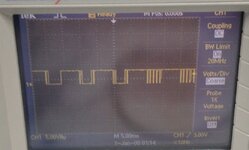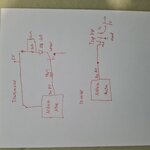ElectricalStudent
Newbie level 4
Hello everyone,
I am trying to find way how to increase the range of IR. Im using transmitter Ir 333 and reciver TSOP348.
Also,I wrote a program in the microcontroller (Arduino) in order to make sure thats the trasmitter will transmit at 38Khz frequency at modulation frequency 100Hz.
Up to 2.5m the connection is great but after 3m I dont have connection.
How can i increase the distance from 2.5m to 5m?
Thank you.
I am trying to find way how to increase the range of IR. Im using transmitter Ir 333 and reciver TSOP348.
Also,I wrote a program in the microcontroller (Arduino) in order to make sure thats the trasmitter will transmit at 38Khz frequency at modulation frequency 100Hz.
Up to 2.5m the connection is great but after 3m I dont have connection.
How can i increase the distance from 2.5m to 5m?
Thank you.

